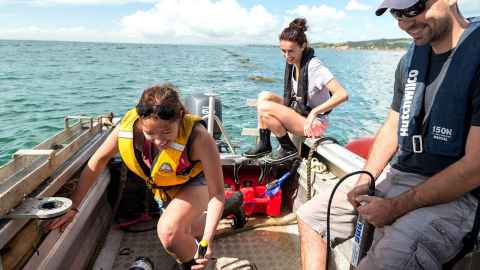How to help put plastic behind us
7 June 2018
Opinion: The era for us to remove short-term single use plastic from our lives is here. So what are the alternatives?

The war against plastic and its impact on the environment is gaining momentum. Most people must now be aware that the amount we are using is simply unsustainable, and we all need to makes changes to halt the literal ever-rising tide of plastic that is polluting land and water around our world.
This is especially so for single-use and disposable plastic products discarded within a year of use. Although there have been major advances in the technologies and systems used to try to recycle these plastics, there remains one clear question: what are the alternatives and are they any better than using plastics to begin with?
In the wave of attention plastic use has had in the past year, several alternatives have been suggested. This includes biodegradable plastics, re-usable cotton bags, paper, glass, and long-lasting re-useable plastics, such as Tupperware. While mostly anything which is not disposable plastic is a good option, the fact is some alternatives have a more significant impact on the environment than others.
Biodegradable plastics have the potential to solve a number of waste management issues. However, they can compromise and complicate waste management technologies already in place. This is especially so for disposable packaging which cannot be easily separated from organic waste. Biodegradable plastics are better used to complement other disposable plastic waste minimisation efforts than as a compromise.
Another issue raised by biodegradable plastics is that the degradation process relies on exposure to sunlight and oxygen, and can be influenced by temperature and humidity, making the process potentially long-winded. And this means they have the potential to do more harm than good.
Even worse, investigations assessing the degrading rate of biodegradable plastics in the stomachs of turtles have provided evidence that degradation does not occur fast enough to avoid turtle death.
There has been backlash against biodegradable plastics around the globe and claims they are 100 percent biodegradable are not holding up. This has led the US Council of Better Business Bureaus to rule that makers should stop calling the products “eco-friendly”.
Biodegradable plastics have the potential to solve a number of waste management issues.
So if not biodegradable plastic, what about other alternatives?
Re-useable bags have attracted a great deal of interest, especially with the launch of “Bags Not” and the banning of plastic bags across several supermarket giants. The cloth and cotton versions of the bags are durable and washable, making them a great alternative to plastic. With the rapid increase in the use and marketing of these bags, there is hope for a reduction in the amount of single-use plastic used at the checkout. However, many of these alternatives are plastic, or are cloth bags with a plastic component like a hard plastic bottom. While the purpose of this rigid plastic bottom is obvious, it is counter-intuitive to the reduction of plastic waste.
Other alternatives like glass, long-lasting hard-plastics and paper all have a lesser environmental impact, depending on the context, and many can be re-purposed for a more positive use. For example, glass is an ideal reusable material for the storage of food items. However, if glass is used as a short-term disposable product, such as for baby food, the impact on the environment can be just as bad as using plastic alternatives.
Ultimately, because plastics have been mass produced for only the past 60 years, long-term overall impact is not yet known. Degradation rates vary considerably depending on the location, and when products degrade through weathering, such as in marine environments, they break down into smaller, micro-fragments which can have huge environmental impacts on juvenile marine life.
In New Zealand, the prevalence of these microplastics has been demonstrated in different regions by Ngahiraka Mai Tawhiti, the voyaging waka. The crew of the waka have been travelling across New Zealand teaching about voyaging, traditional Māori astronomy and ocean plastic pollution, particularly the alarming impact of microplastics.
Without doubt, the era for us to remove short-term single use plastic from our lives is here. We need to move away from short-term solutions and start working towards a long-term end goal with re-useable and environmentally friendly alternatives. We must start leaning towards change and looking forward with new and improved initiatives and technologies for a brighter, cleaner, and greener future.
Emily Joy Frost is a doctoral candidate in the University of Auckland’s School of Biological Sciences.
This article reflects the opinion of the author and not the views of the University of Auckland.
Used with permission from Newsroom, How to help put plastic behind us published on 7 June 2018.